When visiting a Japanese shrine, you might come across wooden plaques hanging in designated areas, adorned with colorful messages and illustrations. These are ema, traditional wooden prayer boards used to convey wishes and gratitude to deities.
Ema have been an integral part of Japanese shrine culture for centuries, serving as a medium through which people express their heartfelt desires. From prayers for health and success to hopes for romance or prosperity, ema capture the hopes and dreams of countless individuals.

The unique shape and purpose of ema are not only intriguing to locals but also to international visitors, making them a symbolic souvenir of Japan’s spiritual traditions. Interestingly, ema have also made appearances in modern pop culture, such as in the video game Nioh 2, where they enhance the atmosphere of traditional Japanese settings.
This article delves into the significance, history, and usage of ema while exploring their representation in Nioh2, providing a comprehensive guide for those curious about this fascinating aspect of Japanese culture.
What Are Ema?
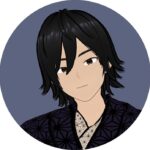
I’m very curious about Ema.
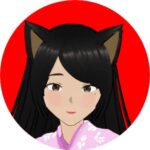
Then let’s learn about Ema together!
The Meaning and Origins of Ema

Ema (絵馬) are wooden plaques used in Japan to communicate prayers or gratitude to deities at shrines. The word “ema” translates to “picture horse,” reflecting their origins as substitutes for real horses that were once offered to deities in ancient rituals.
What Wishes Are Written on Ema?

People write a wide range of wishes on ema, from passing exams to securing good health, finding love, or achieving career success. It’s believed that by writing your desires on these plaques, you are sending your prayers directly to the shrine’s deities.
Why Ema Became Popular

Ema started gaining popularity among common people during the Heian period (794–1185) as they sought ways to express their prayers without extravagant offerings. Over time, ema became a widely accepted practice, and shrines began customizing the designs based on their local culture and deities.
The History of Ema
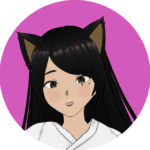
I don’t know about the history of Ema!
Horses and Ancient Rituals

In ancient Japan, horses were considered sacred animals and were often sacrificed or dedicated to gods during rituals. As this practice became unsustainable, people began offering painted images of horses on wooden plaques, which evolved into today’s ema.
The Evolution of Ema Design

Ema designs have evolved from simple horse paintings to diverse motifs that include local legends, animals, and even popular culture references. Today’s ema often feature five-sided wooden boards that are easy to hang and write on.
Regional Differences in Ema

Different regions in Japan have their own unique ema designs. For instance, some shrines feature ema depicting animals associated with the shrine’s deity, while others might include imagery tied to local festivals or myths.
How to Write an Ema
The Right Way to Write an Ema

When writing an ema, it’s important to focus your thoughts and write with sincerity. Keep your wish clear and concise, and avoid being overly vague or lengthy.
Examples of Wishes

Examples of common ema inscriptions include:
- “I pray for my family’s health and happiness.”
- “May I pass my university entrance exam.”
- “I wish to find true love.”
Adding a note of gratitude to your wish can enhance the spiritual experience.
How to Offer Your Ema

After writing your wish, hang the ema in the designated area at the shrine. It’s customary to bow and express your gratitude before leaving it there for the deities to receive.
Ema in the Game Nioh2

How Ema Are Depicted in the Game

In the action-packed game Nioh2, ema are featured as part of the detailed shrine scenes. These depictions add to the immersive atmosphere, giving players a sense of Japan’s cultural and spiritual essence.
A Cultural Touch in Virtual Worlds

The inclusion of ema in Nioh2 showcases the developers’ efforts to authentically represent Japanese traditions. This helps players, especially international ones, learn about ema in an engaging way.
How Ema Enhances the Game Experience

Ema not only serve as decorative elements but also highlight the historical and cultural depth of Nioh2’s world, allowing players to explore a slice of Japan’s rich heritage within the game.
Ema Q&A
- QWhere can I buy ema in Japan?
- A
You can purchase ema at most Shinto shrines in Japan. They are usually available near the main prayer area or the shrine shop.
- QDo ema actually make wishes come true?
- A
While there’s no guarantee, many people find that writing their wishes on ema helps clarify their goals and provides emotional comfort through the act of prayer.

If you are interested in Shimenawa,
check the article below!
Conclusion

Ema are more than just wooden plaques; they are a tangible connection between people and Japan’s spiritual traditions. With their deep historical roots and evolving cultural significance, ema continue to play an important role in shrine visits, offering a moment of reflection and hope for everyone who writes on them.
Whether you’re visiting Japan or experiencing ema through games like Nioh2, these prayer boards offer a unique insight into the country’s heart and soul. Next time you visit a shrine, take the opportunity to write your own ema and leave your mark on this timeless tradition.

If you are interested in Japanese culture, you may love these games!
Let’s play!
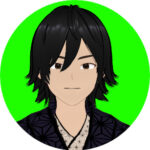
Yes! Let’s play!



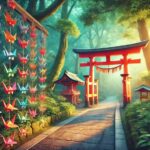
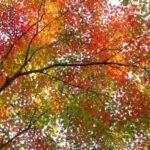
Comments